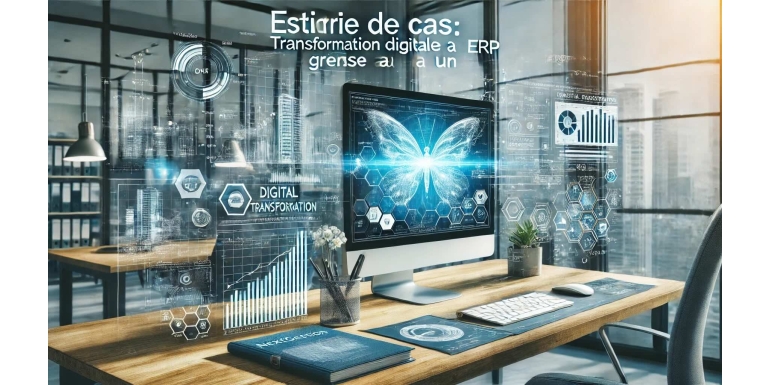
Digital transformation has become imperative for businesses wishing to remain competitive in a constantly evolving world. The implementation of an Enterprise Resource Planning (ERP) system can be a powerful lever to achieve this transformation. This article explores how an ERP can catalyze a successful digital transformation, illustrated by concrete examples and best practices.
1. Understanding Digital Transformation
1.1 Definition and Importance
Digital transformation involves integrating digital technologies into all aspects of a business, fundamentally changing how it operates and delivers value to customers. The aim is to improve operational efficiency, enhance customer experience, and create new business models.
1.2 Role of ERP
An ERP plays a central role in this transformation by integrating various business processes within a single platform. This allows for better visibility of operations and real-time data, facilitating decision-making.
2. Case Study: Company XYZ
2.1 Company Overview
Company XYZ, an automotive parts manufacturer, faced several challenges, including inefficient manual processes, information silos, and poor customer service. Aware of the need to transform, it decided to implement an ERP.
2.2 Transformation Goals
The primary goals of XYZ were to improve productivity, optimize costs, enhance customer satisfaction, and increase responsiveness to market changes. The ERP was to be the cornerstone of this transformation.
3. Steps in ERP Implementation
3.1 Needs Analysis
Before anything else, XYZ conducted a thorough analysis of its current processes. This helped identify inefficiencies and define the specific features required for the ERP.
3.2 Choosing the ERP Solution
After evaluating several options, XYZ chose an ERP that offered sufficient modularity to meet its specific needs while allowing easy integration with existing systems.
3.3 Planning and Preparation
An implementation plan was established, including employee training, data migration, and change management to ensure a smooth transition.
4. Implementation and Challenges
4.1 Implementation
The ERP implementation was carried out in several phases. Each phase was carefully tested before full deployment. Key users were involved at every stage to ensure the system met their needs.
4.2 Challenges Encountered
Despite rigorous planning, challenges arose, including resistance to change and training issues. The company had to implement communication initiatives to reassure staff about the benefits of the ERP.
5. Results of the Transformation
5.1 Improved Efficiency
One of the most significant outcomes was the increase in operational efficiency. Processes that previously took hours were reduced to a few minutes through automation.
5.2 Better Data Visibility
With the ERP, XYZ gained real-time visibility into its operations. This allowed for better planning and faster decision-making, essential for responding to market fluctuations.
5.3 Increased Customer Satisfaction
The transformation also led to a noticeable improvement in customer satisfaction. Delivery times were reduced, and communication with customers improved thanks to integrated customer relationship management systems within the ERP.
6. Lessons Learned
6.1 Insights
XYZ's experience revealed several important lessons. First, employee involvement is crucial for the success of such a transformation. Second, clear and ongoing communication is essential to overcome resistance to change.
6.2 Recommendations
For companies considering digital transformation through an ERP, it is recommended to:
- Carefully assess specific needs.
- Choose an adaptable and scalable ERP solution.
- Budget for training and change management.
7. Future Perspectives
7.1 Continuous Evolution
Digital transformation is an ongoing process. XYZ plans to explore advanced features such as artificial intelligence and predictive analytics to continue improving its operations.
7.2 Importance of Innovation
To remain competitive, the company must continually innovate and adapt to emerging technologies in the ERP field and beyond.
Conclusion
The case study of Company XYZ perfectly illustrates how an ERP can serve as a catalyst for digital transformation. By improving efficiency, data visibility, and customer satisfaction, XYZ not only overcame its challenges but also laid the foundation for a sustainable future. Companies must adopt a strategic and thoughtful approach to make the most of their ERP systems.
